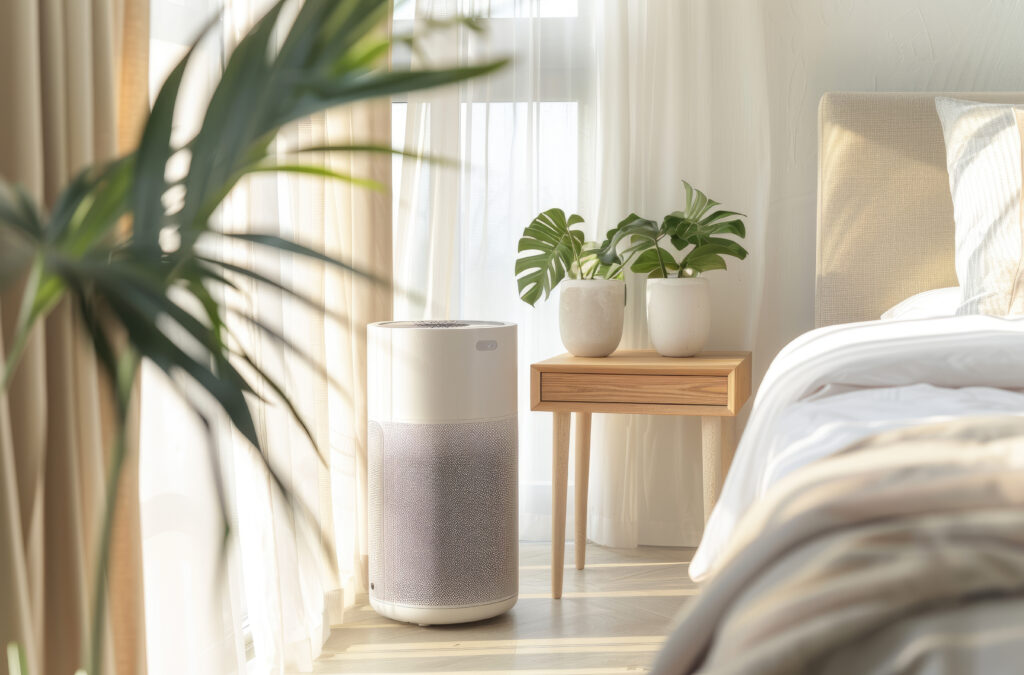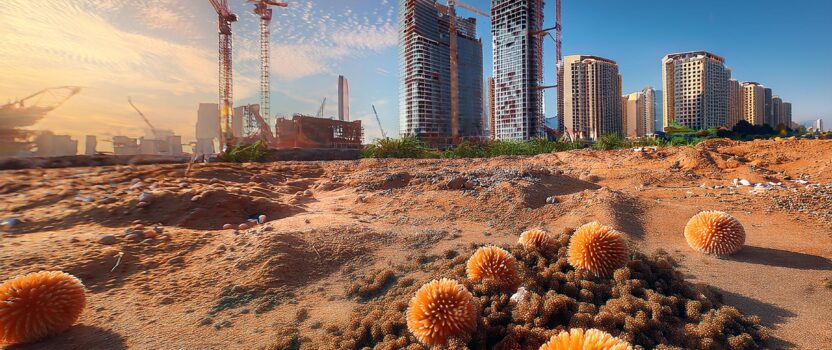The Influence of Environmental Factors on Respiratory Health
Highrise building, major, long-term construction, and high-traffic transportation & emergency transportation routes.
Regardless of where you live, it seems like construction is all around us—sometimes right next door! Whether it’s the rise of new high-rise buildings, major long-term construction projects, or the constant hum of high-traffic transportation and emergency routes, our environment is increasingly shaped by these changes. While development can bring benefits, it also introduces significant environmental factors that can impact our health, particularly respiratory health.
Environmental factors like air pollution, allergens, and contaminants are crucial in the development and worsening of respiratory conditions such as asthma and chronic obstructive pulmonary disease (COPD). Analyzing these issues through the lens of natural and applied sciences provides deep insights into how these factors impact respiratory health and underscores the need for effective environmental interventions.

Air Pollution: Air pollution, including particulate matter (PM), nitrogen dioxide (NO2), sulfur dioxide (SO2), and ozone (O3), has been well-documented for its harmful effects on respiratory health. Research shows that high levels of these pollutants can cause inflammation and oxidative stress in the respiratory tract, aggravating asthma and leading to reduced lung function over time exposure can also increase the risk of developing COPD (Health Impact of Pollution | State of the Air, n.d.-c).
Proximity to Construction: Imagine living just five feet away from a high-rise construction site—this is the exact distance from the window right now when writing this blog post where major construction is taking place. This close proximity means constant exposure to dust, chemicals, and pollutants from construction activities, which can severely affect respiratory health. Such environmental contaminants can seep into living spaces, potentially leading to worsening respiratory issues like asthma or Chronic obstructive pulmonary disease (COPD) (PartnerOne Environmental, 2022).
Furthermore, the clanging, sharp noises, and vibrations from the construction create muscle tension and increase stress, further impacting overall health. Based on my personal experience, I recommend exercising to relieve muscle tension. If possible, consider relocating from the area if it’s feasible for you. If you can’t, consider an air purifier, which can help filter some of the toxins in the environment, and get some plants for the home. According to Carroll and Grant (2024), certain plants like dense hedges, bamboo, and tall shrubs can act as natural sound barriers, reducing noise pollution and enhancing the sense of tranquility in your space. Additionally, plants can improve air quality by absorbing pollutants, and their mere presence can make you feel connected to nature and at greater ease.
For more relief, consider using headphones with noise-reduction features and installing, noise-reducing curtains and even soundproof bedsheets thanks to a few scientists at MIT to enhance your comfort and peace of mind.

Image by StrategicTalentAssociates.net via stock.adobe.com
Allergens and Factors: Allergens such as pollen, dust mites, and mold spores also play a significant role in respiratory health. These allergens can provoke immune responses that cause airway inflammation and constriction, symptoms commonly associated with asthma. Advances in immunology have improved our understanding of these interactions, leading to more targeted treatments (National Institute of Environmental Health Sciences, 2021).
Genetic Factors: Genetic factors further influence an individual’s susceptibility to respiratory diseases. Genetic research has identified specific genes linked to increased risks of asthma and COPD. This knowledge allows for personalized approaches to medicine, where treatments can be personalized based on an individual’s genetic profile to enhance effectiveness (Centers for Disease Control and Prevention, 2023).
Summary: Understanding environmental impacts on respiratory health through the lens of natural and applied sciences is vital. It helps identify key pollutants and allergens, reveals how they affect the body, and highlights the role of genetics. This comprehensive view supports the creation of public health policies, clinical practices, and interventions aimed at reducing the impact of environmental factors on respiratory diseases.
As we go about our daily routines, let’s not forget the importance of what’s inside—like the food we consume and the air we breathe. A healthy environment isn’t just about enhancing the spaces around us; it’s about nurturing our bodies from within. So, here’s to living well, starting from the inside and out, as we strive for a healthier, more balanced life, amid the challenges of modern living.
Reflection Prompt
How do your current living conditions impact your respiratory health?
Take a moment to assess your current working conditions—consider elements such as your workspace environment, access to resources, and any external disruptions. Reflect on how these factors might affect your productivity. Are there specific environmental challenges you face that could be impacting your work?
Think about potential improvements you could make to enhance your content development process. For instance, could you optimize your workspace or incorporate work partners or tools to boost your efficiency?
Visualize the positive impact a well-optimized, healthier work environment could have on your productivity and everyday well-being. Now, picture yourself thriving in a productive environment, doing your work with ease. Note your insights below!
Take the Next Step in Elevating Your Content Strategy
At Strategic Talent Associates, we partner with companies across Health & Education, Finance & Real Estate, and Entertainment & Media Technology to enhance their marketing and content strategies. Whether you need a partner to support you with blog management, eBooks, content strategy, or more, we’re here to help.
Book a discovery session to explore how we can collaborate to refine your content approach and achieve your marketing goals. Begin your journey toward more effective and impactful content development today.
References
Carroll, J., & Grant, B. L. (2024, June 10). Best sound barrier plants to block the noise from busy roads. Gardeningknowhow. https://www.gardeningknowhow.com/special/spaces/noise-reduction-plants.htm
Hawkins, J. (2024, May 20). MIT scientists created noise-cancelling silk sheets that can soundproof rooms. BGR. https://bgr.com/science/mit-scientists-created-noise-cancelling-silk-sheets-that-can-soundproof-rooms/
Health Impact of Pollution | State of the air. (n.d.-b). Retrieved from https://www.lung.org/research/sota/health-risks
PartnerOne Environmental. (2022, April 28). Environmental Exposures from Construction | PartnerOne Environmental. https://p1enviro.com/recent-activity/environmental-exposures-from-construction/
National Institute of Environmental Health Sciences. (2021). Allergens and air quality. Retrieved from https://www.niehs.nih.gov/health/topics/agents/allergens/index.cfm
Centers for Disease Control and Prevention. (2023, December 21). Asthma. Environmental Public Health Tracking. Retrieved from https://www.cdc.gov/environmental-health-tracking/php/data-research/asthma.html
Affiliate Disclaimer
Full disclosure— I only recommend products that I have personally used and found beneficial for enhancing wellness, productivity, and ease in my work and life. Please note that I receive a small commission for any products purchased through these recommendations.



